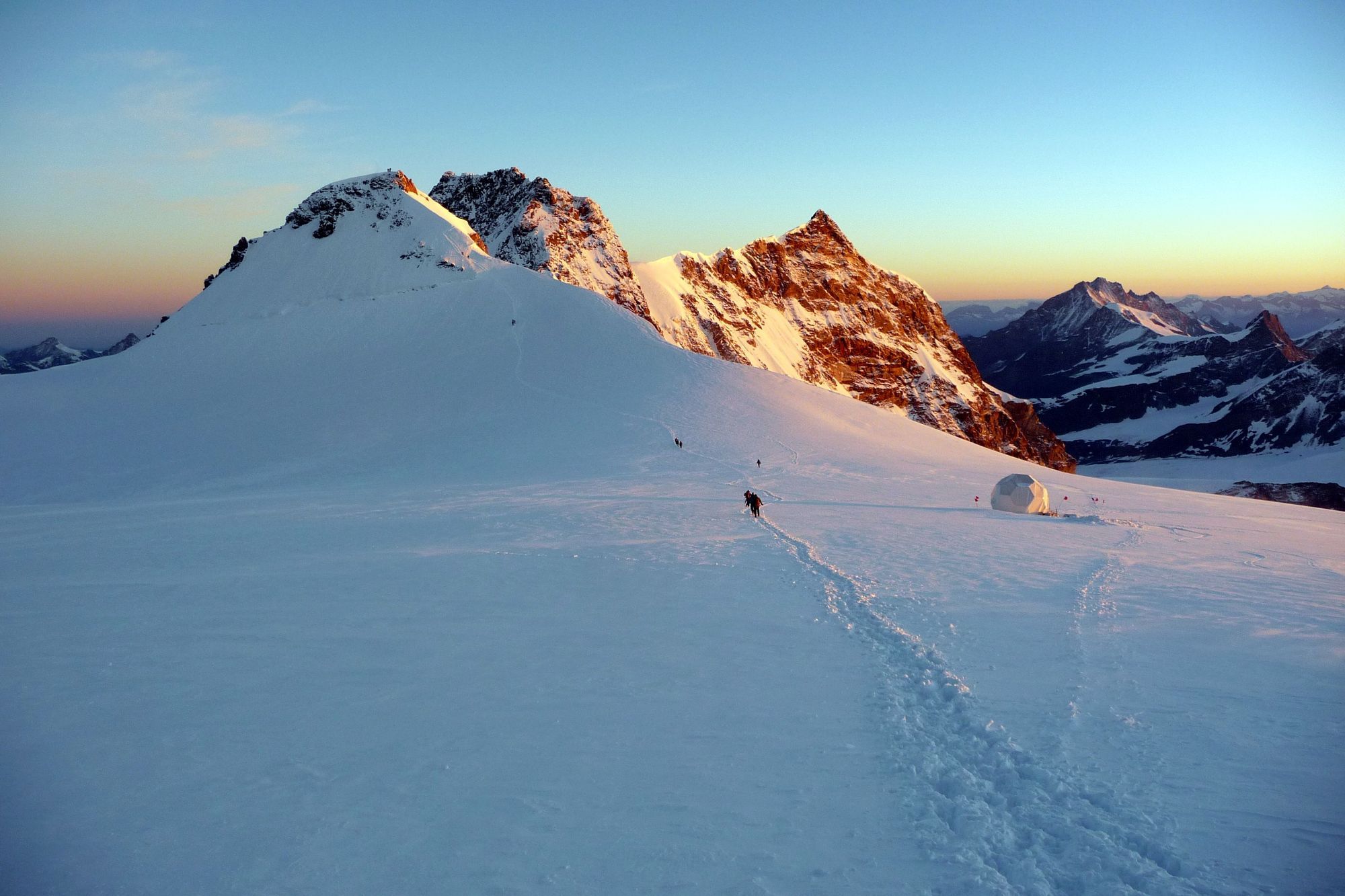For centuries, mountaineers, pioneers and poets have set their minds on climbing Monte Rosa, a massif on the border of Switzerland and Italy which boasts the former’s tallest peaks - and is the second highest mountain in the Alps (and indeed Western Europe), behind only Mont Blanc.
It’s a mountain alive with glaciers and angular, jagged edges - a place of startling beauty in the eastern part of the Pennine Alps. Monte Rosa is sandwiched between Piedmont and the Aosta Valley in Italy and the Swiss Canton of Valais, the latter best known for its luxurious ski resorts - the likes of Zermatt, Verbier and Saas-Fee - but also for the ferocious mountains dotted around the area.

As the pioneering climber Mrs. Henry Warick Cole wrote in 1859, Monte Rosa "is remarkable for the number of its lofty peaks, which are clustered together in a nucleus, which forms the summit, where huge chains of mountains meet and cross each other, and thence, as from a common centre, numerous valleys of exquisite beauty diverge on every side."
This is one of the world’s great mountains; a hub of mountaineering history, and a formidable, dramatic landscape - with views out to Mont Blanc, the Matterhorn and the Weisshorn from the summit. But far from being a single peak, the Monte Rosa is home to many. So, where to start climbing it? Let's get into the details.
How High is Monte Rosa?
At 4,634m the Dufourspitze (known in Italian as Punta Dufour) is the highest peak of the Monte Rosa massif and the tallest mountain in Switzerland, with Nordend (4,634m), a northern peak of Monte Rosa, being the second highest. Two sub-peaks of the Monte Rosa, Zumsteinspitze (Punta Zumstein) at 4,563m and Signalkuppe (Punta Gnifetti) at 4,554m, are the third and fourth highest.
For comparison, the Matterhorn rises 4,478m high on the Swiss-Italian border in Zermatt and Cervinia, while the mighty Mont Blanc, which stands 4,809m tall, is just 175m higher than Dufourspitze, the top point of the Monte Rosa.
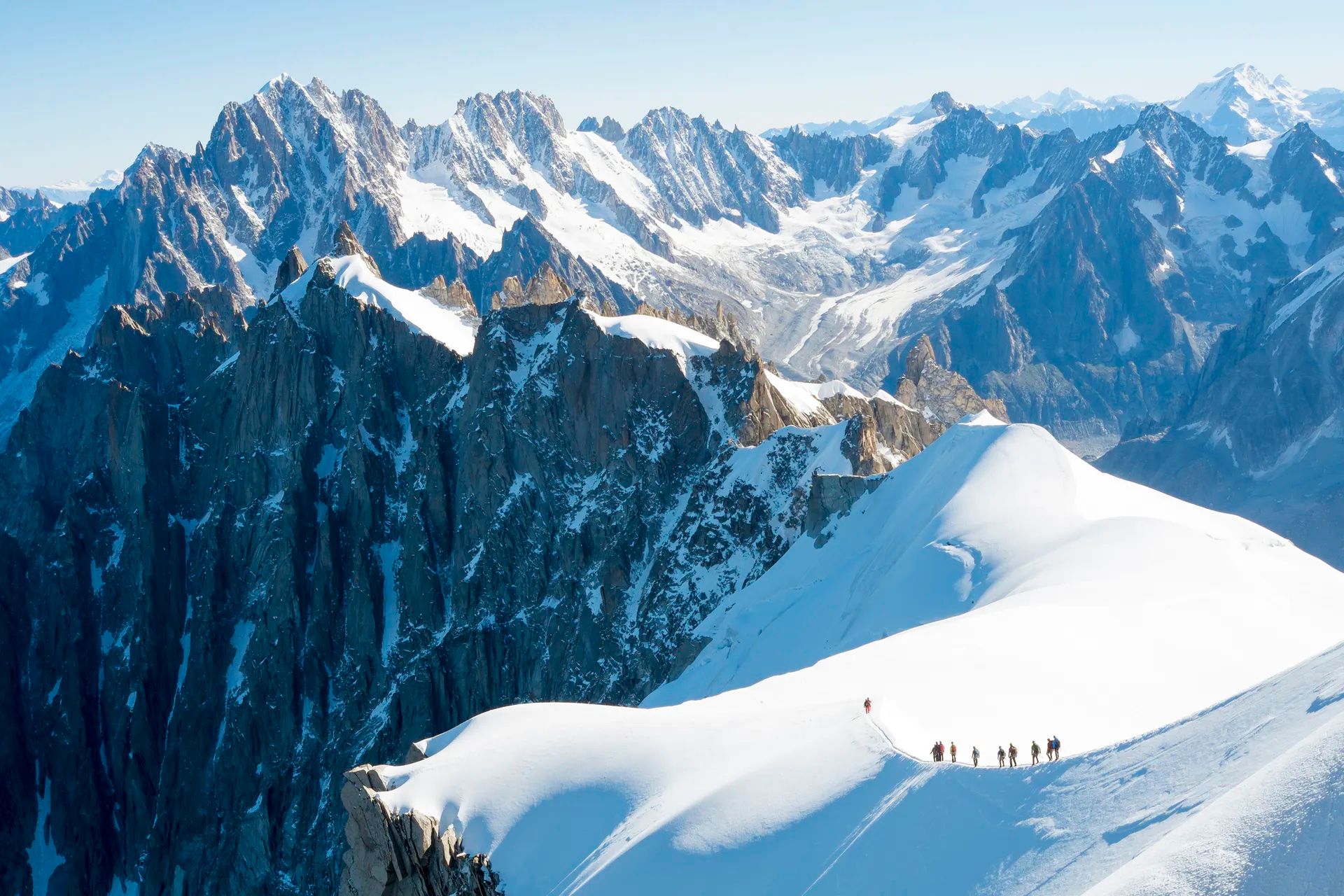
Where is Monte Rosa?
Monte Rosa is located in the Pennine Alps, on the border between Italy and Switzerland and southeast of Zermatt. There are various routes onto the massif - the popular Punta Gnifetti is accessed from the Italian town of Staffal.
Introduction to Climbing Monte Rosa
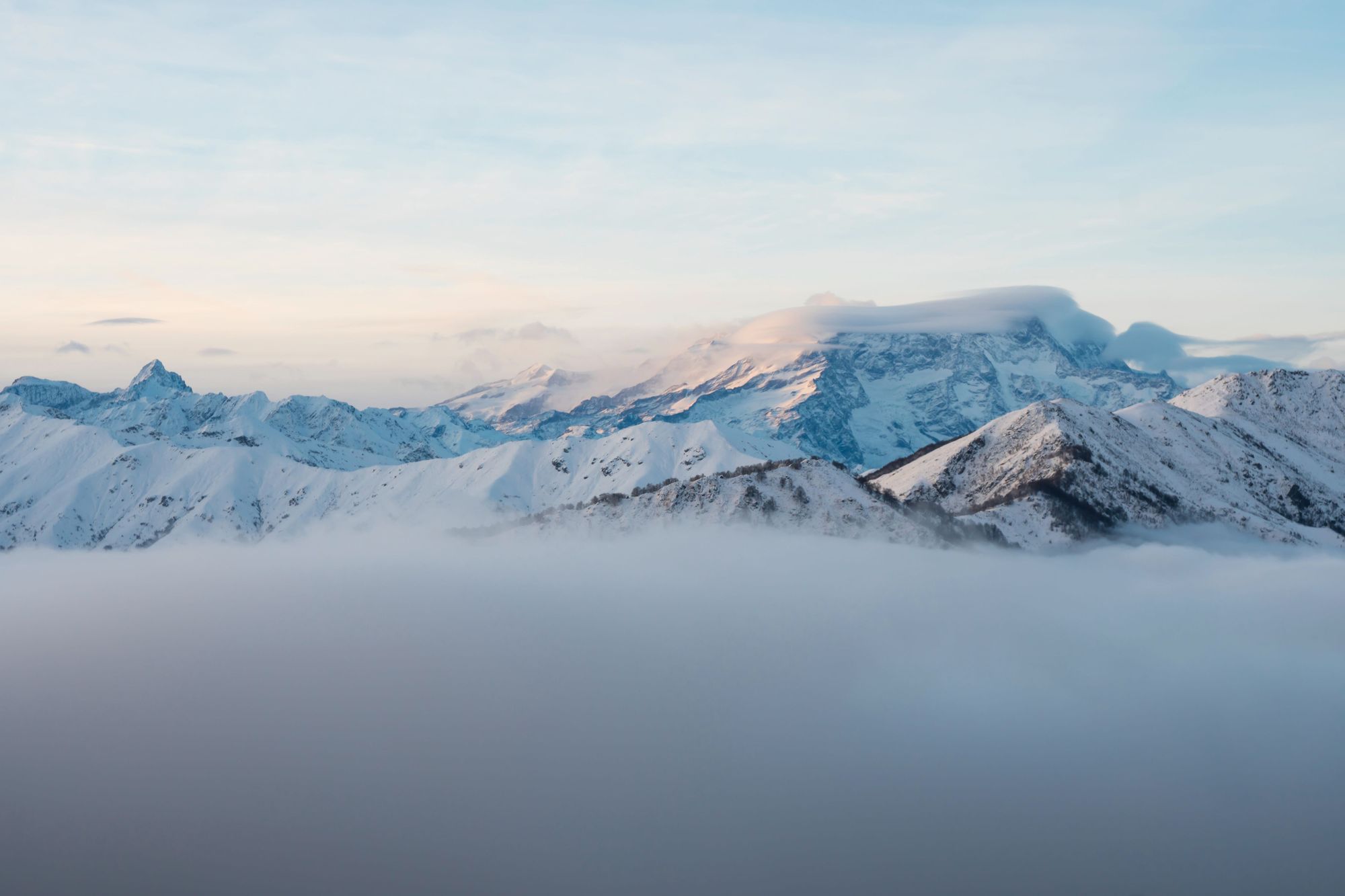
Deciding that you’re going to climb Monte Rosa is one thing, but deciding which peak you’re going to climb to is quite another.
As a whole, the Monte Rosa massif has the largest amount of land over 4,000m in the Alps. While surveyors squabble over the exact definition and number of peaks on the massif, there are generally said to be around 18 true peaks on Monte Rosa, 12 of which exceed 4,000m.
With many peaks comes many possibilities...
Some of the best known peaks that we’ve not already listed include Dunantspitze (Ostspitze), Grenzgipfel, Ludwigshöhe, Parrotspitze (Punta Parrot) - named for the pioneering climber Freidrich Parrot - the Vincent Pyramid and Breithorn.
With many peaks comes many possibilities, and so, there really are an abundance of different ways and routes to climb Monte Rosa - though, given that the mountain has been climbed for so long, some favourites have emerged.
The Spaghetti Tour is a four-to-six day mountaineering epic, which acts as a highlights reel of the Monte Rosa’s 4000m mountains. It’s so-named because of the winding route it takes between the (excellent) mountain huts of the Monte Rosa, on the Val d’Aosta side of the massif, and, of course, for that Italian pasta connection. This is a great route for those looking to bag as many 4,000m mountains as they can in a week, while based up on the high-alpine Monte Rosa plateau.
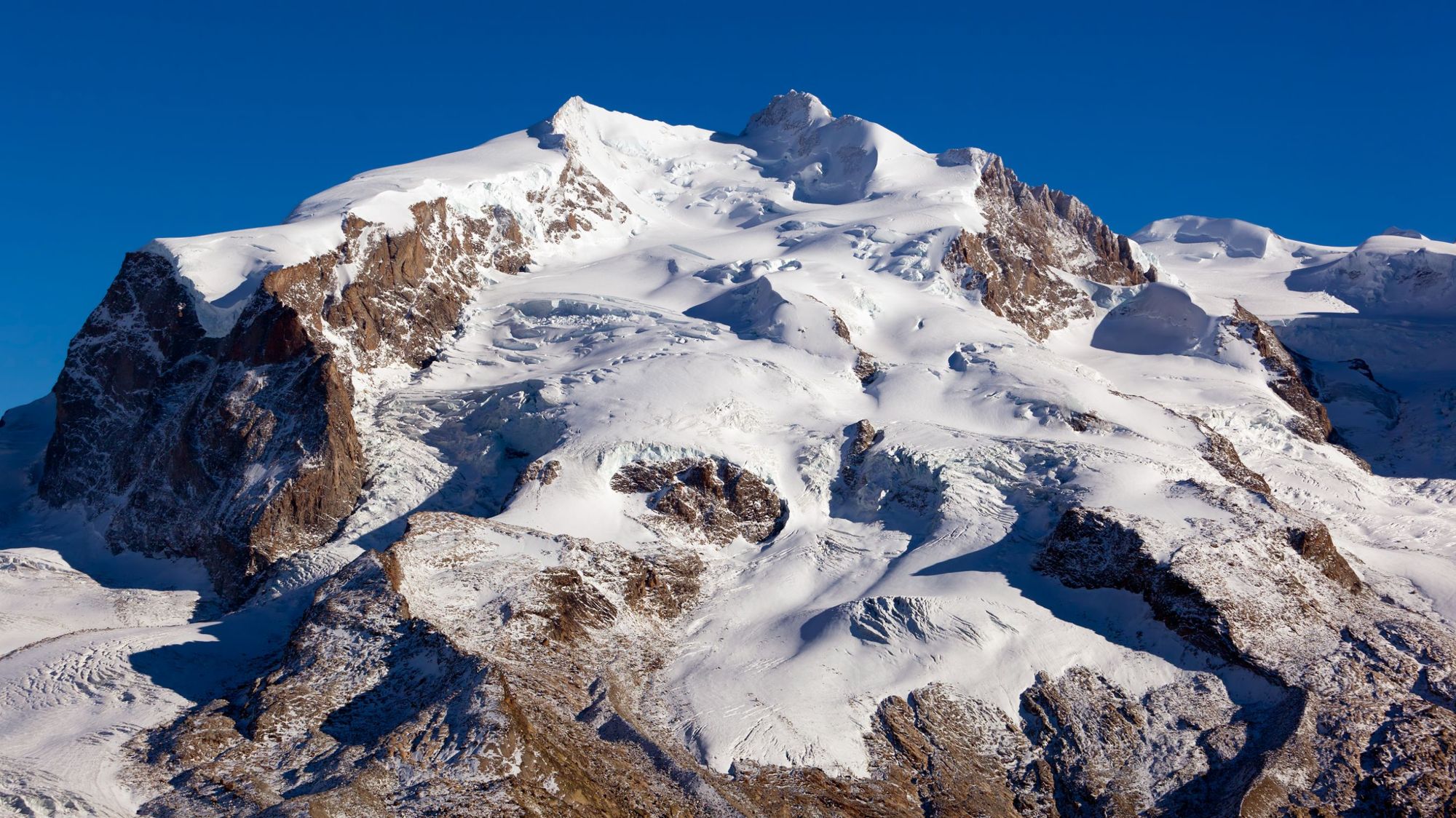
Those who opt out of the Spaghetti Tour tend to target a specific peak of Monte Rosa. The climb to Signalkuppe/Punta Gnifetti, which involves a visit to the Margherita Hut, the highest mountaineering refuge in Europe, is particularly special, and the Dufourspitze is a popular climb for its height. Reaching a peak involves a two-to-three day hike, dependent on experience.
Another alternative is to circle, rather than climb, the massif on the Tour of Monte Rosa (TMR), a legendary 164km/102-mile hike through the Italian and Swiss Alps which loops around the massif, akin to the Tour du Mont Blanc.
Whatever route you choose, you'll find that Monte Rosa is not only beautiful, it also tends to be less busy than the nearby Mont Blanc, or the Matterhorn.
We’ll look at each of these route options in more depth as this guide goes on.
In terms of wildlife, you can hope to see griffin vultures circling in the air, stoats, marmots and ibex dotted around the mountains, and domesticated farm animals.
It’s important to note that this article contains only short summaries of what will be involved in climbing Monte Rosa. It is designed to inspire but not to serve any navigational purpose. It is not intended to guide you on the route and further mapping and planning (and a local guide!) will be required to climb Monte Rosa.
History of Monte Rosa and Climbing
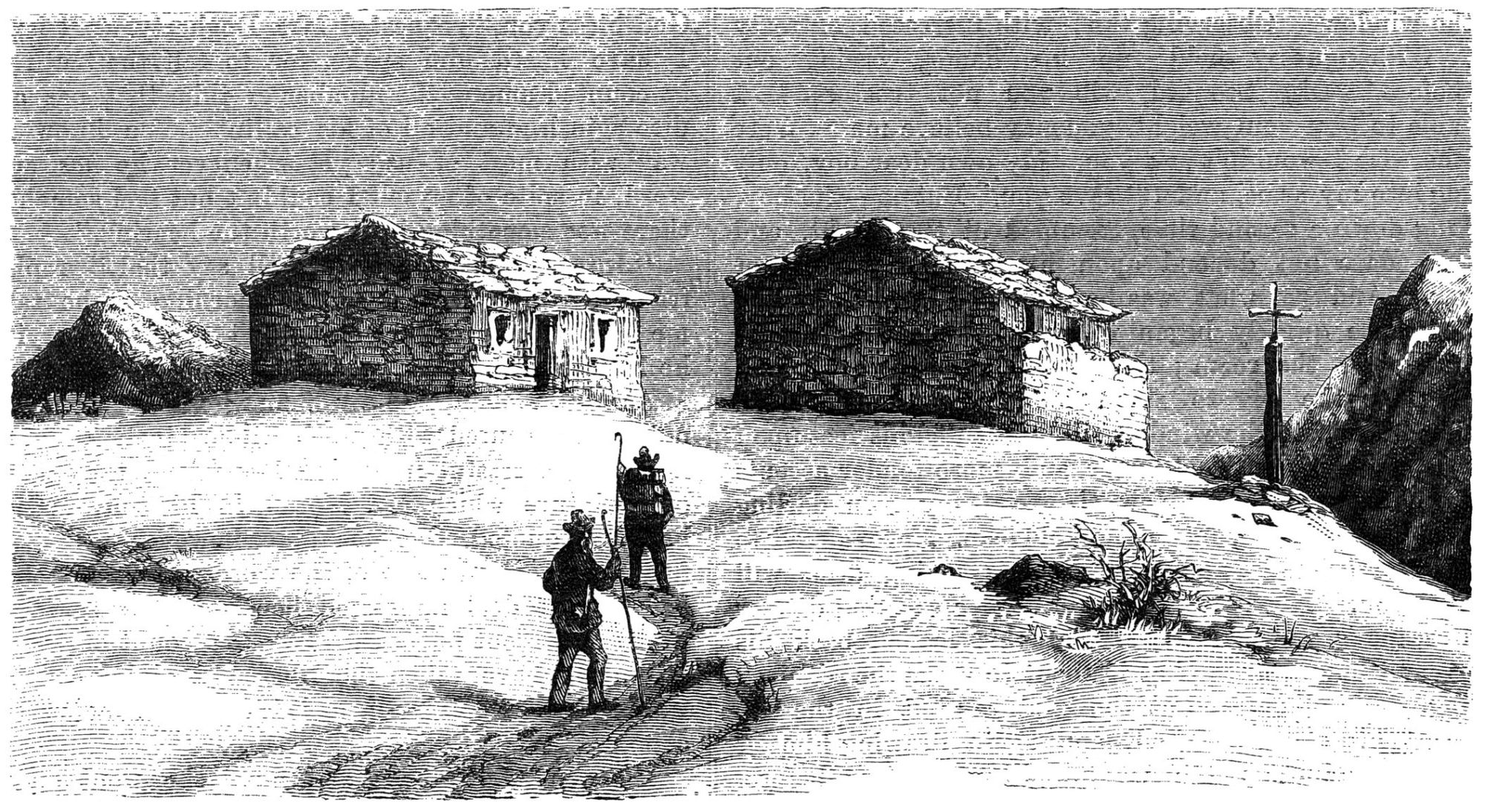
The Monte Rosa is a massif that is drenched in history, both in terms of mountaineering and great minds. No history of the mountain can ignore the contribution of Leonardo da Vinci in popularising it. It was in his Milanese memoirs, at the end of the 15th century, that da Vinci wrote how the mountain was “so high that it seemed almost to overtake the clouds.”
There were attempts to climb the massif, some more serious than others, from the 18th century onwards. In the late 1700s, a group of climbers from the Italian valleys ventured into the mountains, in the belief they would uncover a lost valley between the glaciers of Monte Rosa. That valley was actually the upper part of Zermatt, but they did reach an impressive height, around 4,178m.
Huge chains of mountains meet and cross each other, and thence, as from a common centre, numerous valleys of exquisite beauty diverge on every side...
There were notable but failed attempts to climb the mountain in 1787, 1789 and 1801, first by Count of Morzzo of Turin, then the Genevan geologist Horace-Bénédict de Saussure and lastly, by a doctor named Pietro Giordani. And in 1819, Johann Niklaus and Joseph Vincent from Gressoney succeeded in climbing to the 4,215m Vincent Pyramid, hence the mountain's name. In 1820, the same pair, along with Joseph Zumstein, climbed to another 4,563m peak - only discovering when they reached the summit that this was not the true peak of Monte Rosa. The mountain was, however, named the Zumsteinspitze in honour of Joseph.
Giovanni Gnifetti, the parish priest of Alagna, became the first person to climb Signalkuppe in 1842, an achievement which is reflected in the Italian name for the mountain, Punti Gnifetti - and in the Gnifetti hut on the mountain.
Several attempts were made on the Dufourspitze in the years that followed, most notably in 1848, when a new altitude record was set in Switzerland, at 4,632m, on the Dunantspitze. But it wasn’t until 1 August 1855 that the first ascent of the Dufourspitze, the highest peak of the Monte Rosa was completed, by Matthäus and Johannes Zumtaugwald, Ulrich Lauener, Christopher and James Smyth, Charles Hudson, John Birkbeck and Edward Stephenson.
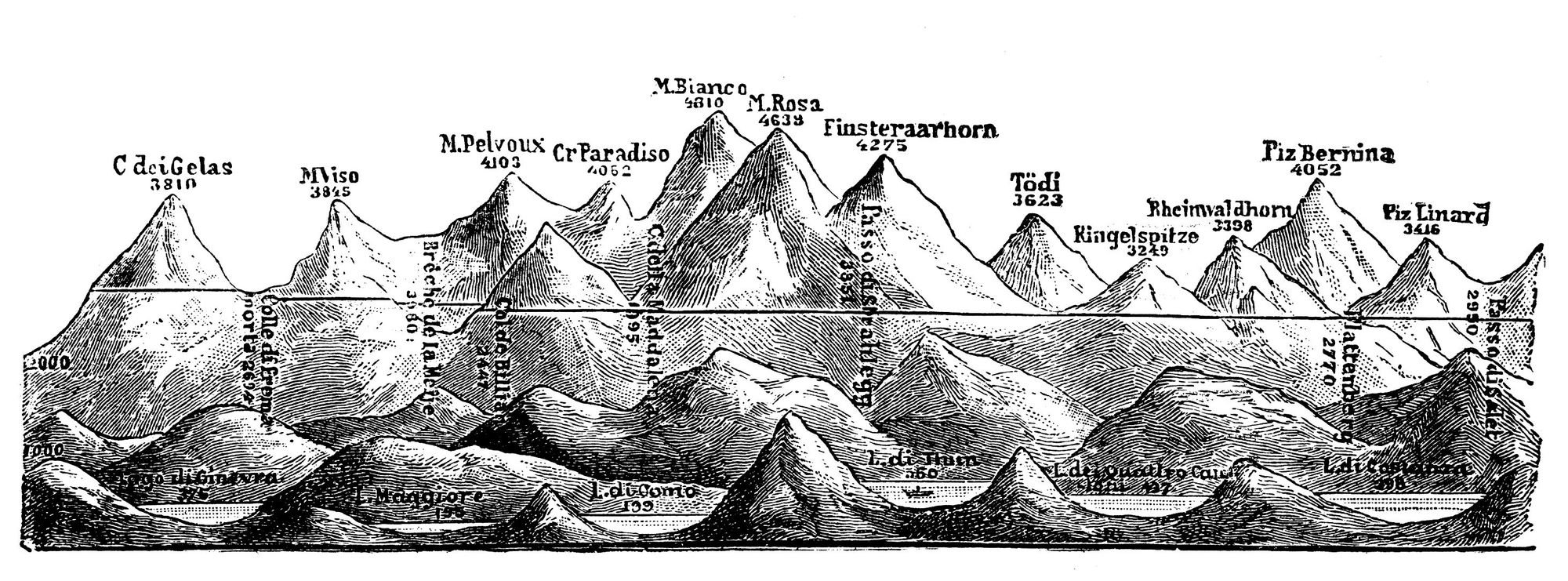
The Zumtaugwald brothers guided eight more people on the same route to the western summit less than two weeks later, and the route is actually still the same route used to summit the Dufourspitze today. The eastern wall of Monte Rose was then summitted on 22 July 1972 by a party led by Ferdinand Imseng.
Perhaps more interesting than all of this is the account of Mrs Henry Warwick Cole, who climbed to various levels of the Monte Rosa, and circled the massif, throughout the 1850s. She later published 'A Lady's Tour Round Monte Rosa' in 1859, one of the first accounts of women's mountaineering.
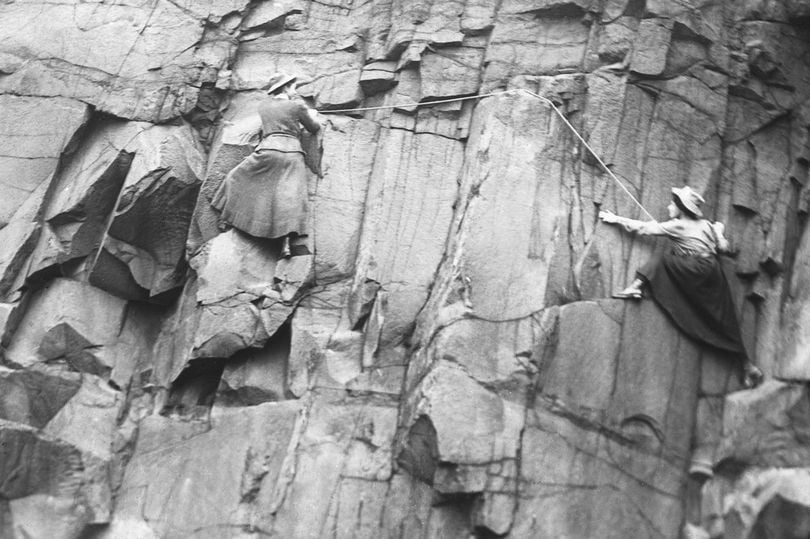
The book, she wrote, was to give "the benefits of my experience to others, in the hope of inducing them, and especially members of my own sex, to follow my example, and visit the valleys which surround this magnificent mountain, some of which have been hitherto but little frequented." This was written at a time when women climbing mountains was still a social taboo.
There were other famous faces too. When he visited Zermatt in 1894, a young Winston Churchill ascended the Monte Rosa on the western face too, insisted on climbing the Monte Rosa rather than the Matterhorn on account of its height, and, legend has it, because the guides on the Monte Rosa charged substantially less.
Climb Monte Rosa: Route Options and Difficulty Levels
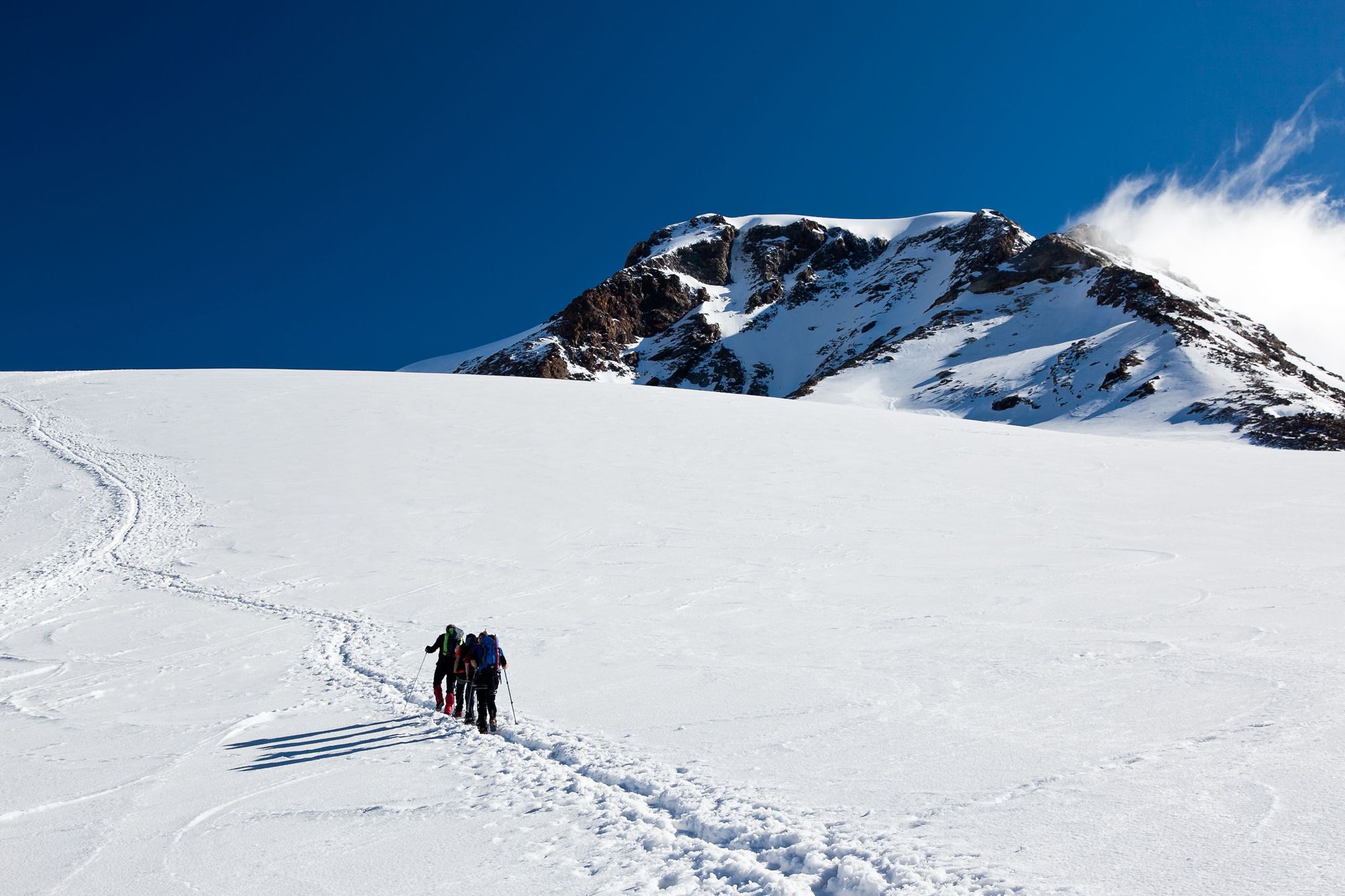
As we’ve mentioned, Monte Rosa is a massif with a plethora of peaks and climbing routes. It would take a full guide book - of which there are many - to get into all of it, so here, we’re just going to talk through three of the options; the Spaghetti Tour, the ascent of Dufourspitze (the summit peak) and one of the most beautiful treks, the Signalkuppe, or Punta Gnifetti.
Each of these tours is considered difficult, and all require both a good level of multi-day, physical fitness and a knowledge of basic mountaineering skills - plus, good old determination.
The Spaghetti Tour on Monte Rosa
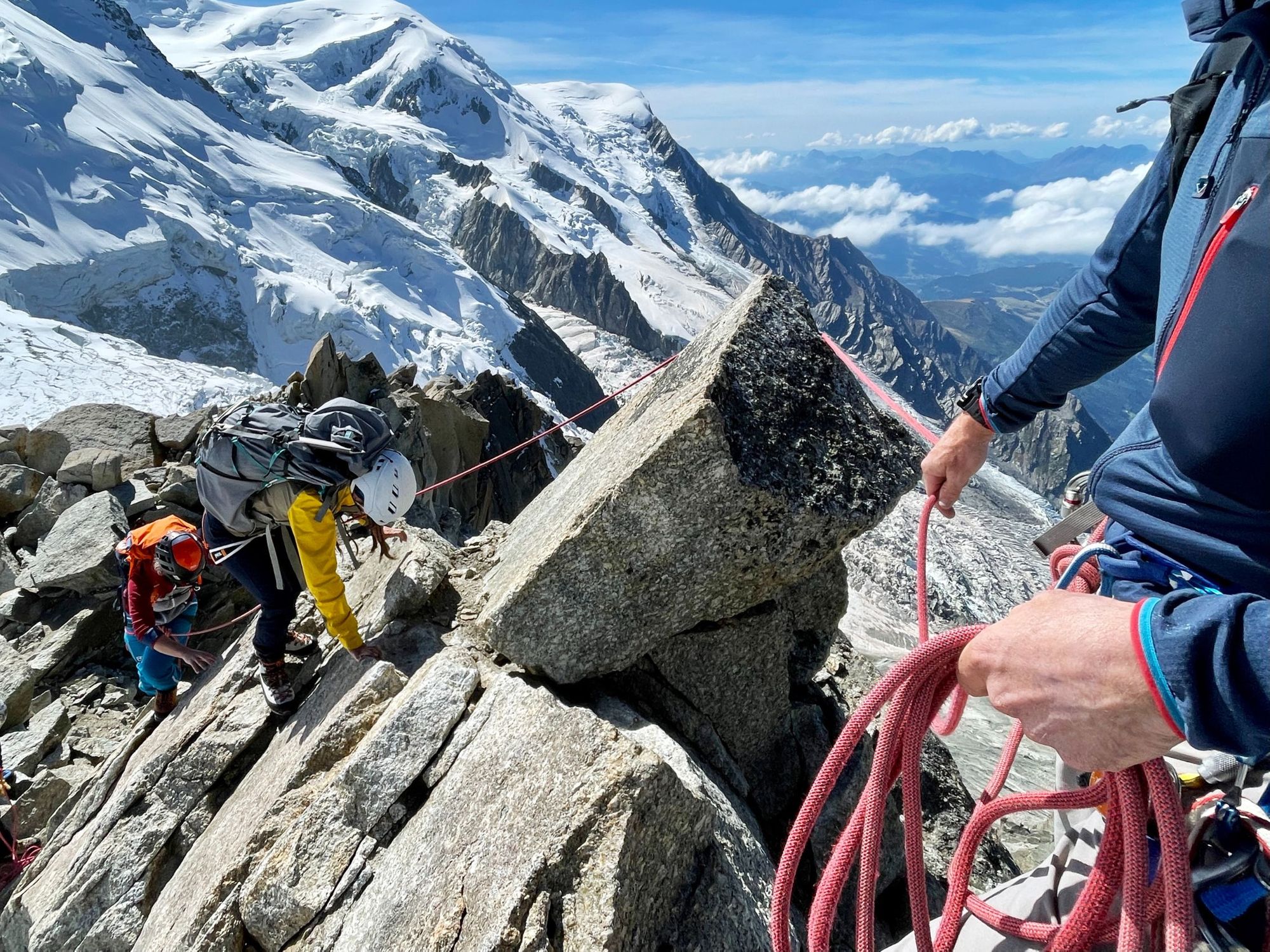
This route makes the most out of the fact that Monte Rosa is a hugely-elevated plateau, and while it doesn’t usually take in the Dufourspitze, it does result in the hiker summiting anywhere between six and 10 mountains over 4,000m in a four-to-six day period, depending on the exact route and conditions.
This trek is a great step up for anyone who has some experience in the mountains but is looking to take their mountaineering to the next level.
The itinerary for the Spaghetti Tour tends to change depending on which tour operator you go with, and what the conditions are like when you’re up there. But you’ll find that the classic Spaghetti Tour starts in Cervinia, on the Italian side of the Matterhorn, and ends in Gressoney, also in the Aosta Valley. Regardless of what specific route you take, this is a trail known for its quality - from the beautiful mountain views over the Lyskamm, Breithorn and Castore massifs to the comfy mountain huts you’ll stay in en route, with top class Italian food.
You’ll summit a whole bunch of 4,000ers too, and in not a whole lot of time - from the Breithorn, Pollux and Castor to the Vincent Pyramid, Balmenhorn, Ludwigshoe and Zumstein.
Climbing Dufourspitze
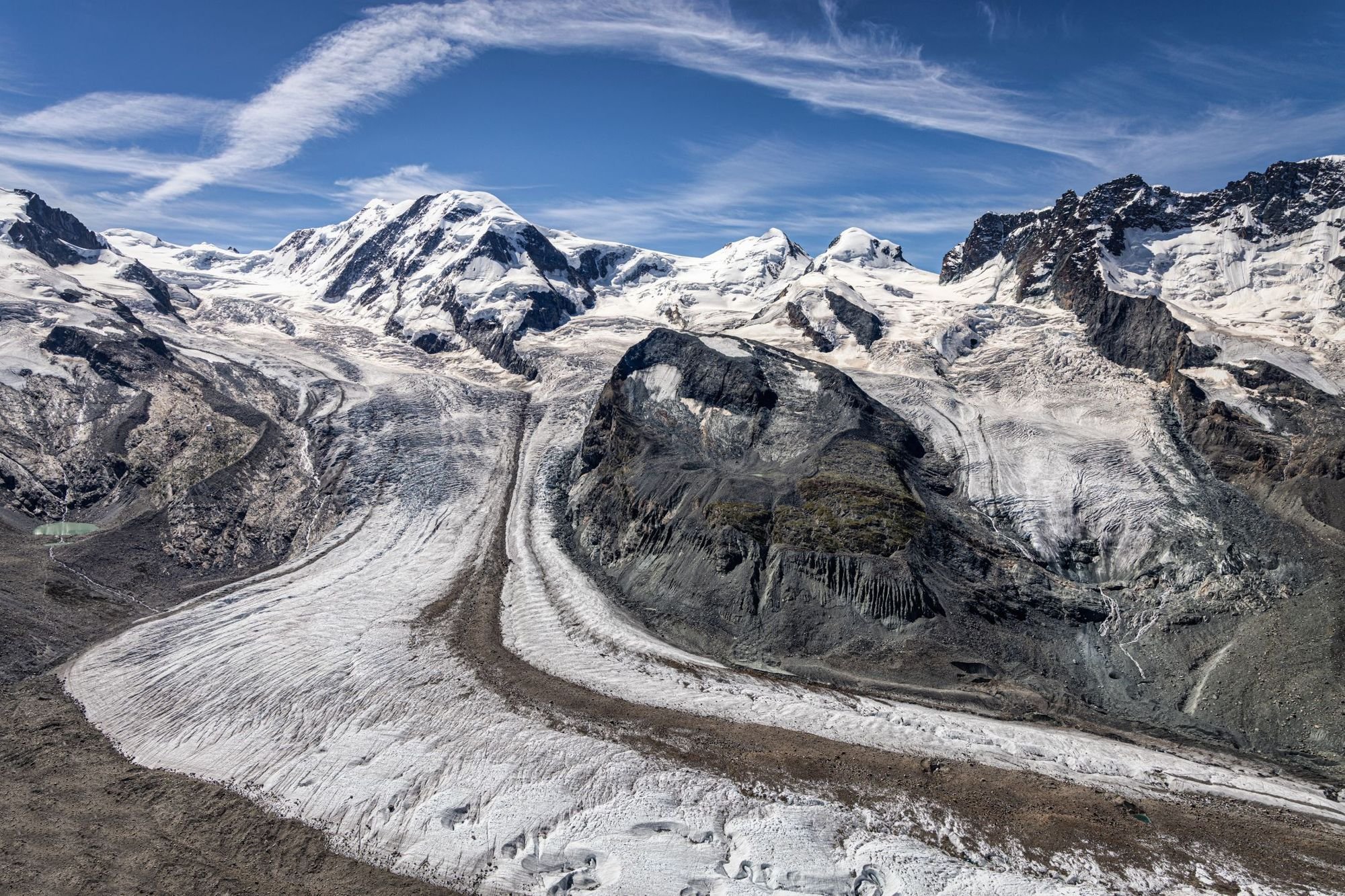
There are various routes to climb the Dufourspitze, the 4,634m summit of Monte Rosa. The most common is the west ridge, as the mountain was first ascended way back in 1855.
Starting in Zermatt, this route requires climbers to take the scenic Gornergrat cog railway line to Rotenboden (2,815m), from where they will cross the Gorner and Grenz glaciers to reach the Monte Rosa Hut (2,883m). The hut has recently been refurbished, and is a particularly unique, crystal-shaped building, covered in reflective, photovoltaic panels - which mean it both reflects the terrain around it, and looks somewhat like a spaceship looking out over the Swiss Alps.
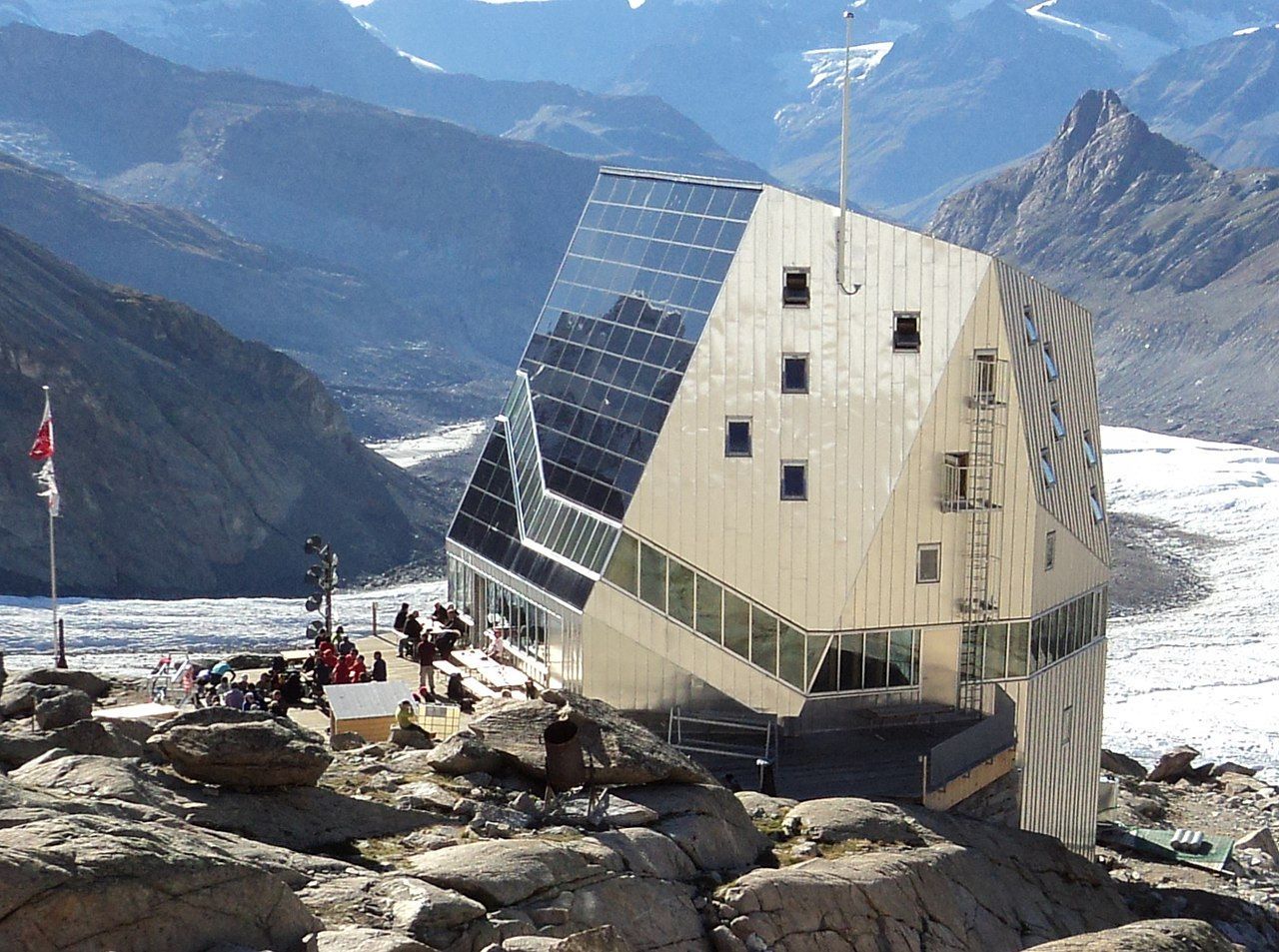
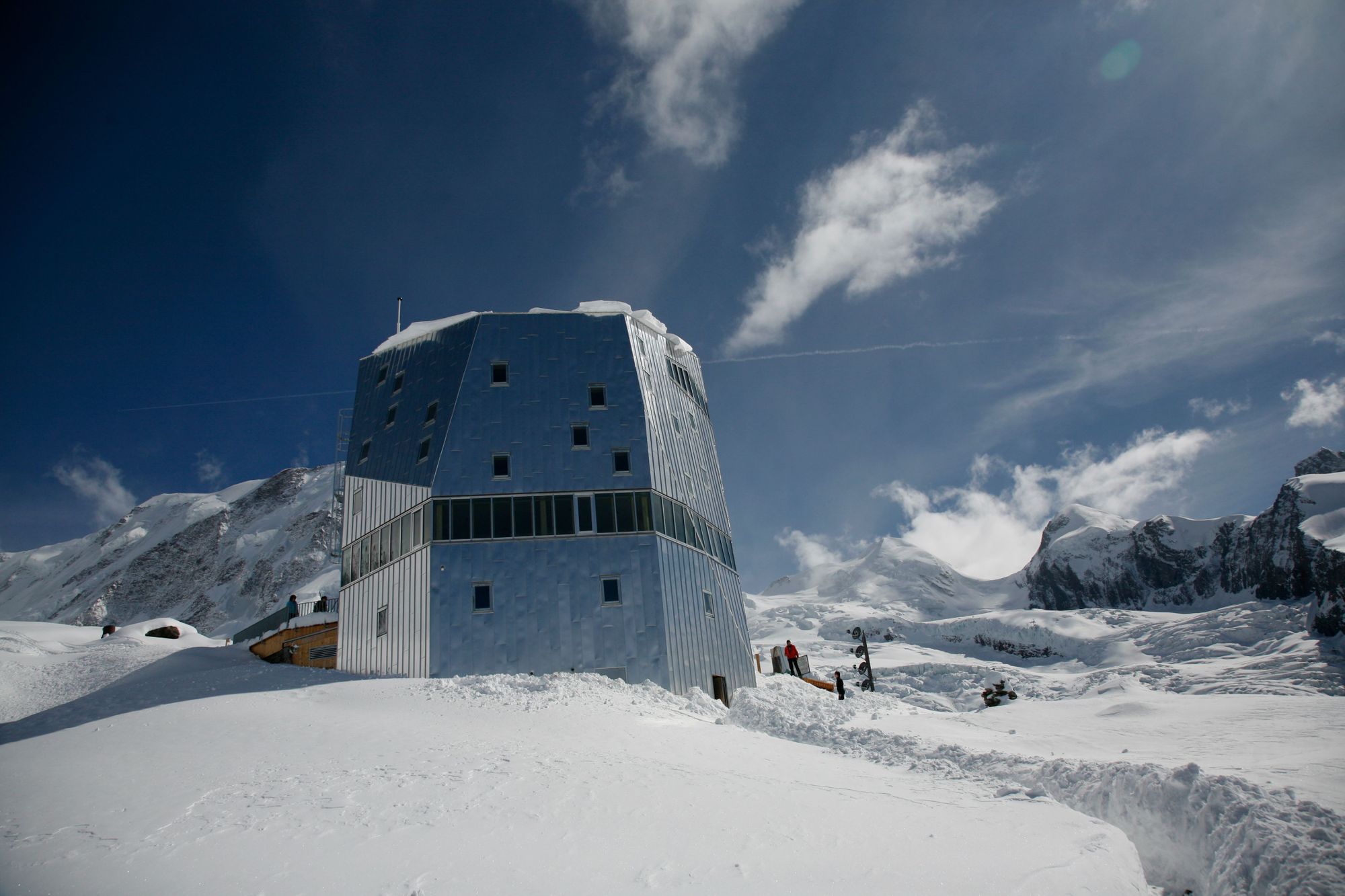
This is the last stop before the push to the summit of the Dufourspitze. From the hut, it’s around a 10-12 hours out-and-back hike - via the Monte Rosa Glacier - to the top of Monte Rosa. As such, it’s essential that you start early, in the darkness, to ensure that you have time to descend.
The most technical terrain you’re going to face on this route is actually as you near the summit.
The most technical terrain you’re going to face on this route is actually as you near the summit, on the Western Ridge. It’s rocky, and it’s usually icy and snowy too. Crucially, you’ll need to do a little rock climbing - between grades II and IV. It can be busy on top too, so it’s unlikely you’ll be able to dwell on the summit for much longer than a picture.
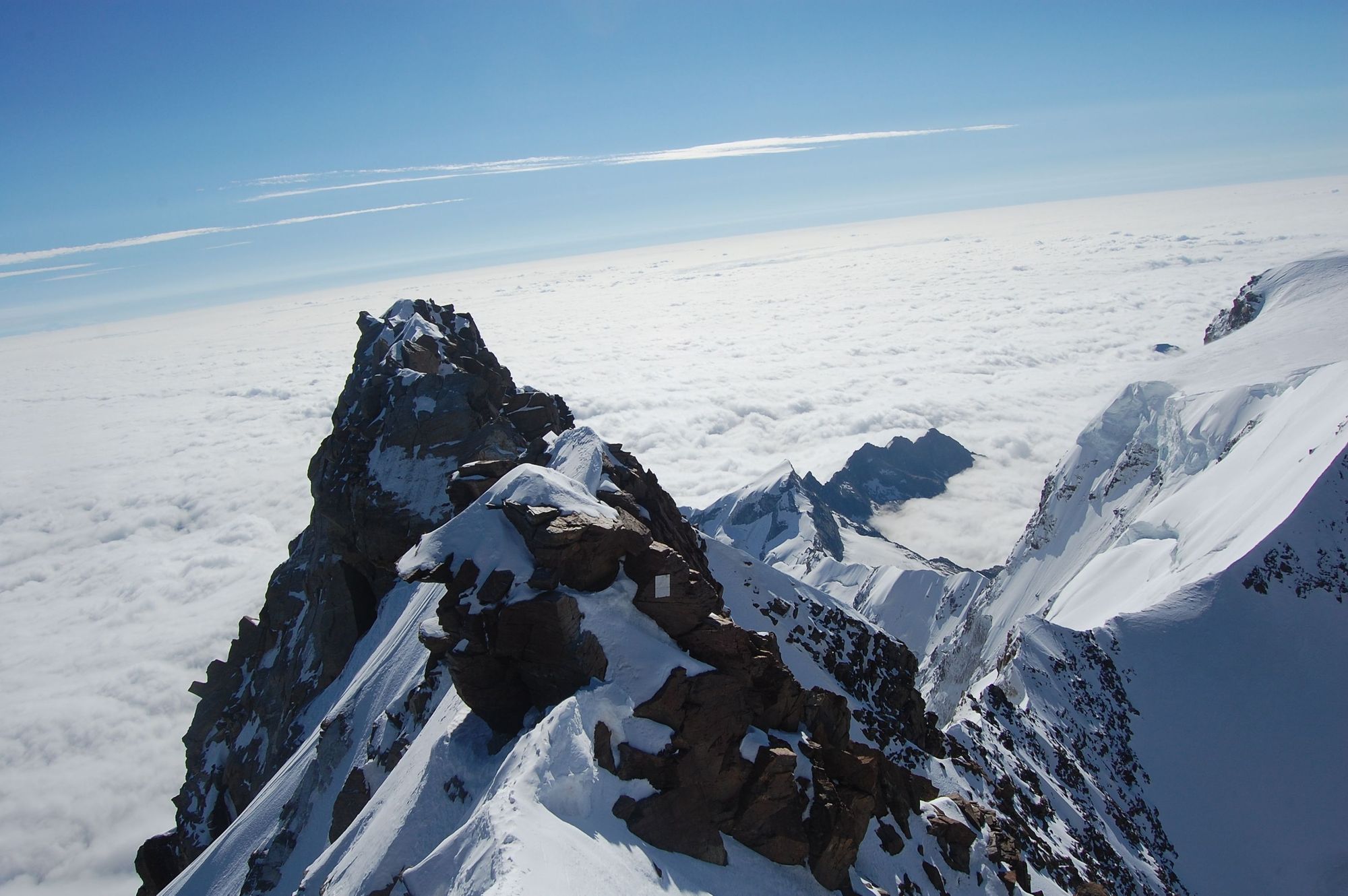
After the top point, there’s still work to be done. It’ll likely be the afternoon by the time you’re heading back to the Monte Rosa Hut, which means the ice on the steep ridgeline you’ve climbed will be melting in the sun. So it’s important that you descend with confidence and care.
This route takes around two-to-three days to hike. There’s a slightly simpler route, known as the Frontier Ridge Traverse, which is said to be easier, but which takes five days. It starts in Zermatt, and includes summits of Pollux (4,092m), Castor (4,223m), the Liskamm Ridge (4,527m) and Parrot Spitze (4,432m), before finally topping out on Dufourspitze on day five.
There are plenty of more perilous routes too - via the Zumsteinspitze or on the East Face.
Climbing Signalkuppe (Punta Gnifetti)
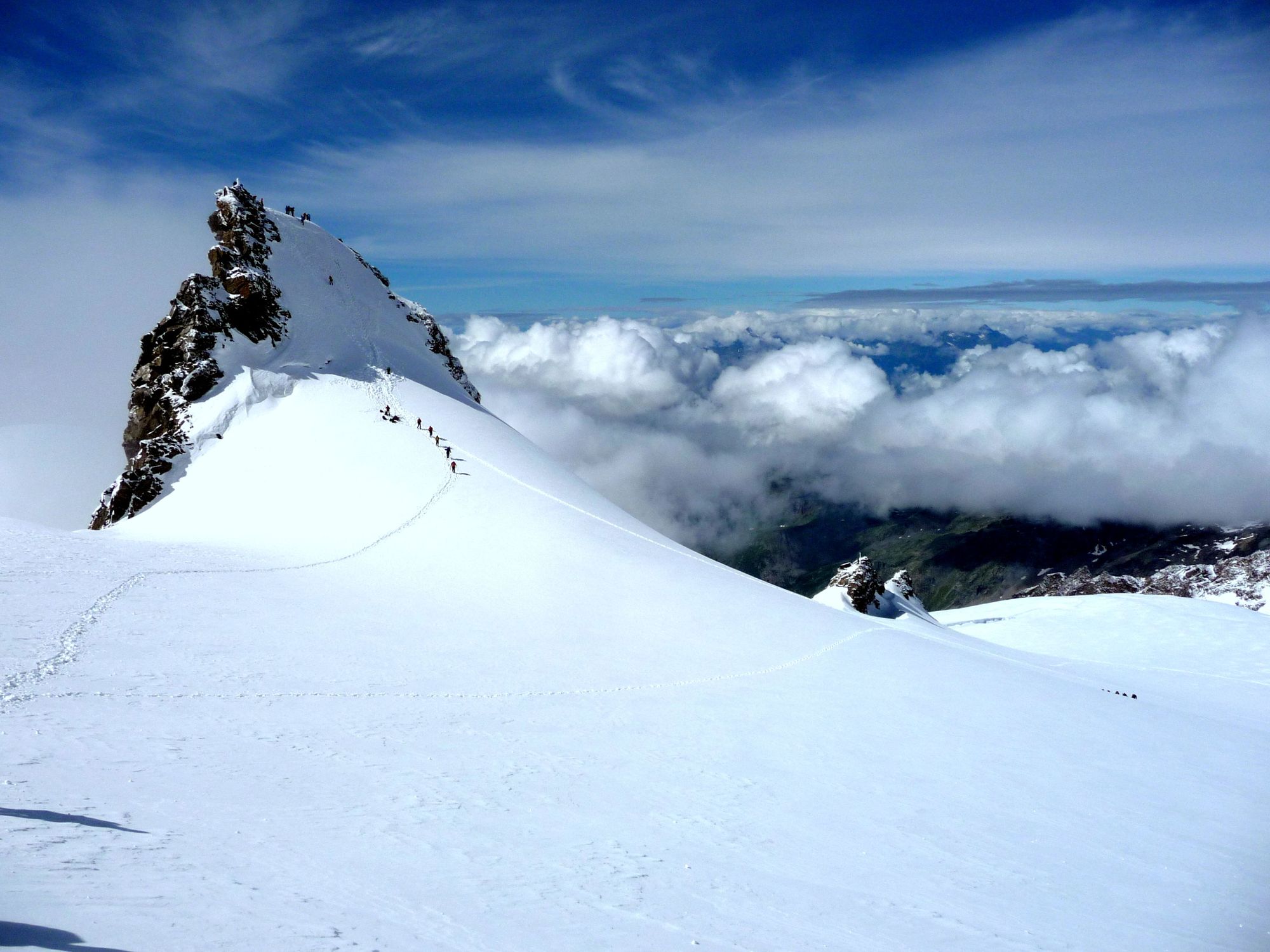
Starting from Punta Indren, you’ll hike up a glacier of the same name, surrounded by stunning alpine crags and far-reaching landscapes. Not far beyond lies the Mantova mountain refuge, where you’ll be based during your ascent on Signalkuppe/Punta Gnifetti at 4,554m.
Celebrate in the Margherita Hut, the highest building in Western Europe...
From the Mantova Hut, it’s an eight-to-nine hour round trip to the summit of Signalkuppe. On your way, you’ll traverse the Garstelet Glacier and the Lys Glacier, along the base of the Vincent Pyramid. After the rocky islet of Balmerhorn, you'll reach the Col du Lys at 4,248m.

Continuing along the seracs of the north-facing base of the Parrotspitze, you’ll turn north to cross the top of the Grenz Glacier before reaching Col Gnifetti at 4454m. From here, it’s one more push up to the summit of Pointe Gnifetti, and one of the highest points in western Europe. Celebrate in the Margherita Hut, the highest building in Western Europe, which sits on the summit of the mountain. After a coffee and a slice of pizza or two head back down to the Mantova Hut.
The Mantova Refuge is also a great base for reaching other Monte Rosa summits. The next day, instead of heading back down to town, head up to climb Vincent Pyramid, walking up the Lys Glacier to the summit, and bag another 4,000er.
Preparing for a Monte Rosa Climb
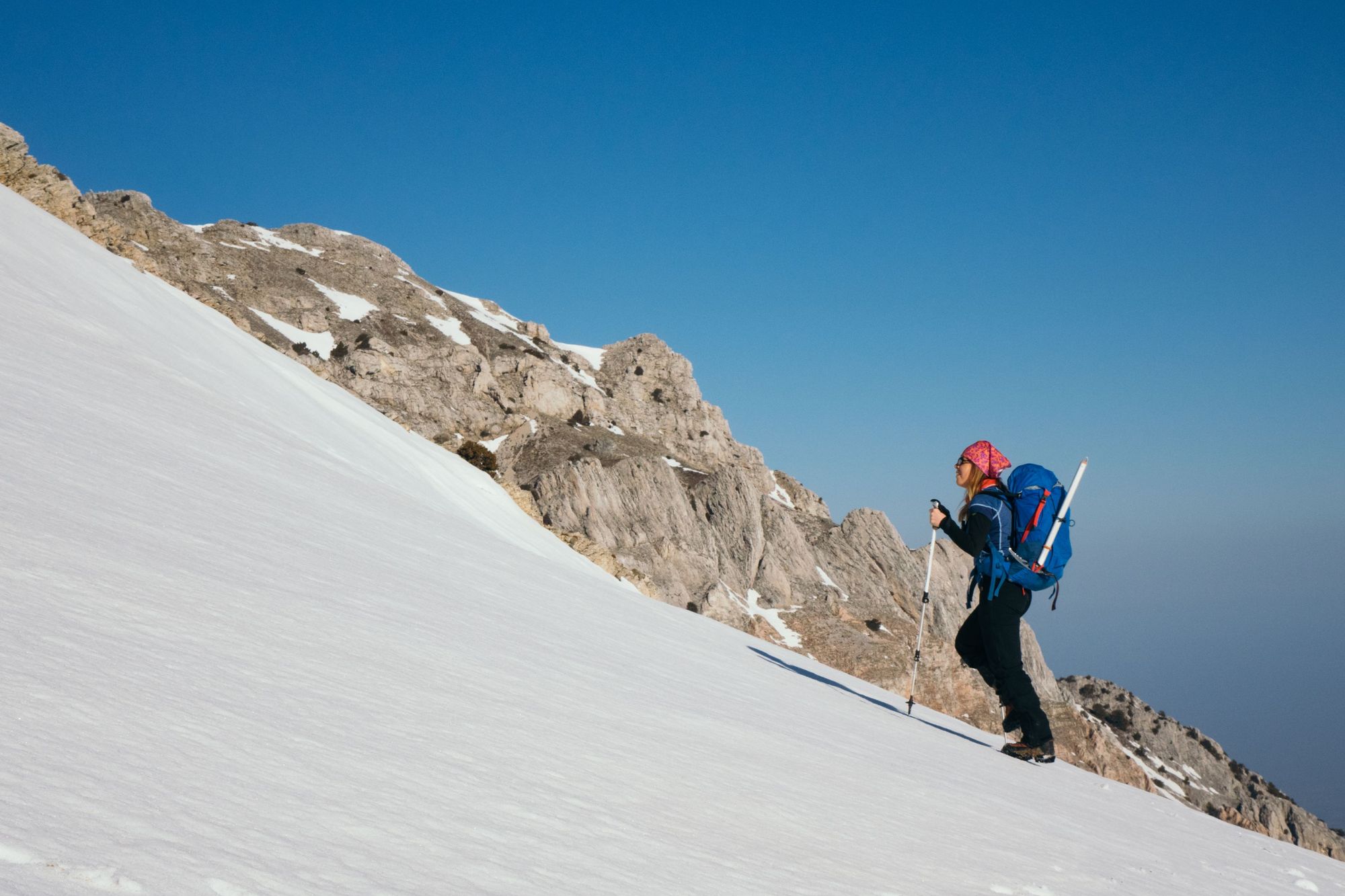
To climb Monte Rosa, you’ll need a strong base level of fitness, as the days on the mountain can be long and demanding - with up to eight or nine hours of climbing in one stint. This is especially true for those five-day tours, though the challenge of getting up to above 4,000m and descending on the same day should not be underestimated. Climbing Monte Rosa is tough.
Experience in mountain climbing and hill walking is always going to be helpful, but with a good guide, you won’t specifically need to have previous mountaineering experience above 4,000m - as long as the guide is going to train you in how to use the gear, and tackle the terrain properly beforehand. Of course, any experience you do have in mountaineering will be hugely useful.

There isn't a huge amount of technical terrain, but you will have to scramble in parts, at high altitude, and cross steep snow slopes and glaciers which can be dangerous if not done properly.
If in any doubt whatsoever, contact your guides before travelling, for tips on how to properly prepare.
When is the Best Time to Climb Monte Rosa?
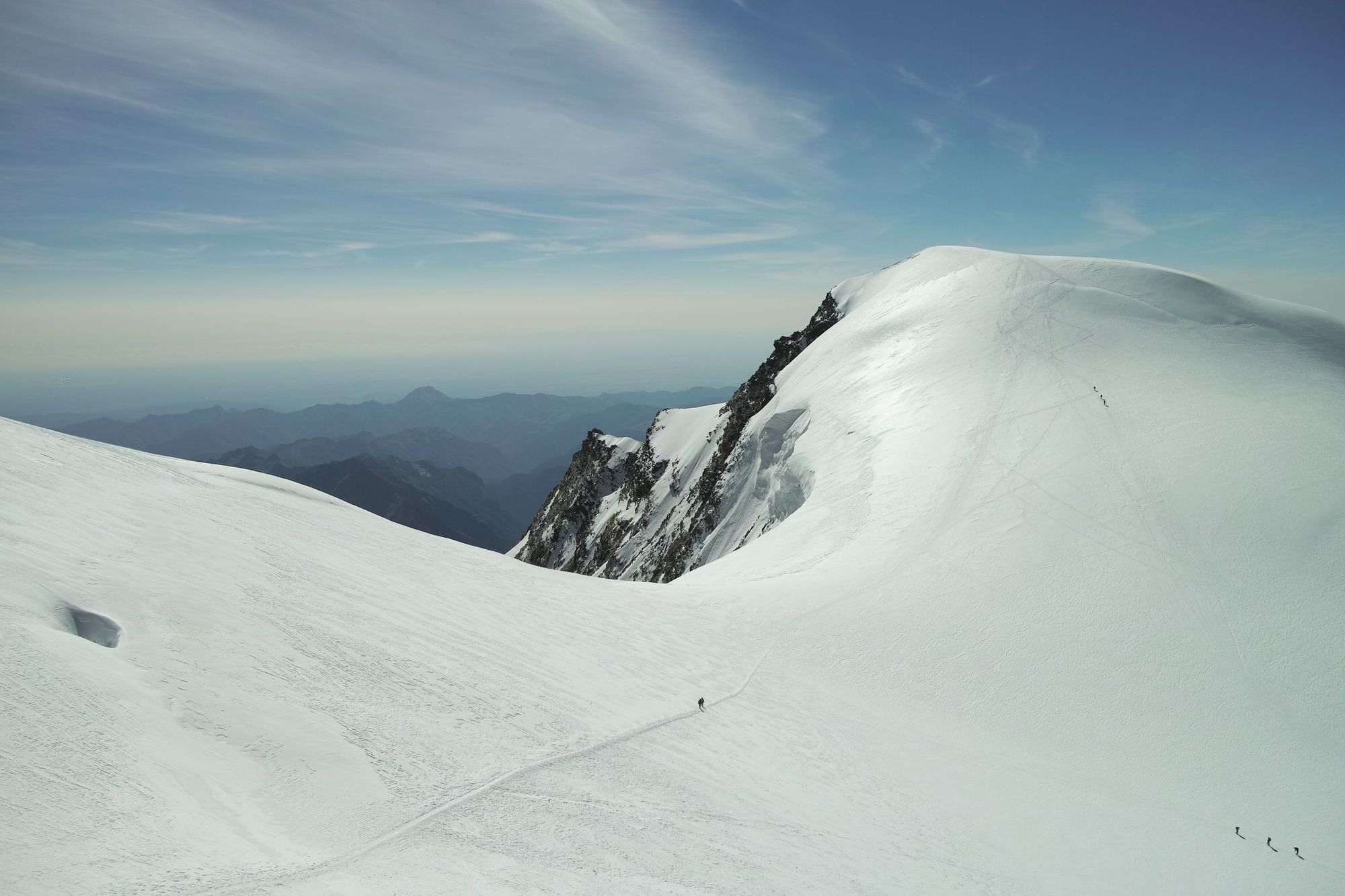
The Monte Rosa is covered in snow for the majority of the year, with the exception of the fearsome, rocky crags so spiky they resist even snowflakes. What that means for mountaineers is that - unless you’re a particularly seasoned, hardcore mountaineer - you’re going to want to climb Monte Rosa in summer. June, July and August are the best months to climb Monte Rosa.
What are the Mountain Huts like on Monte Rosa?
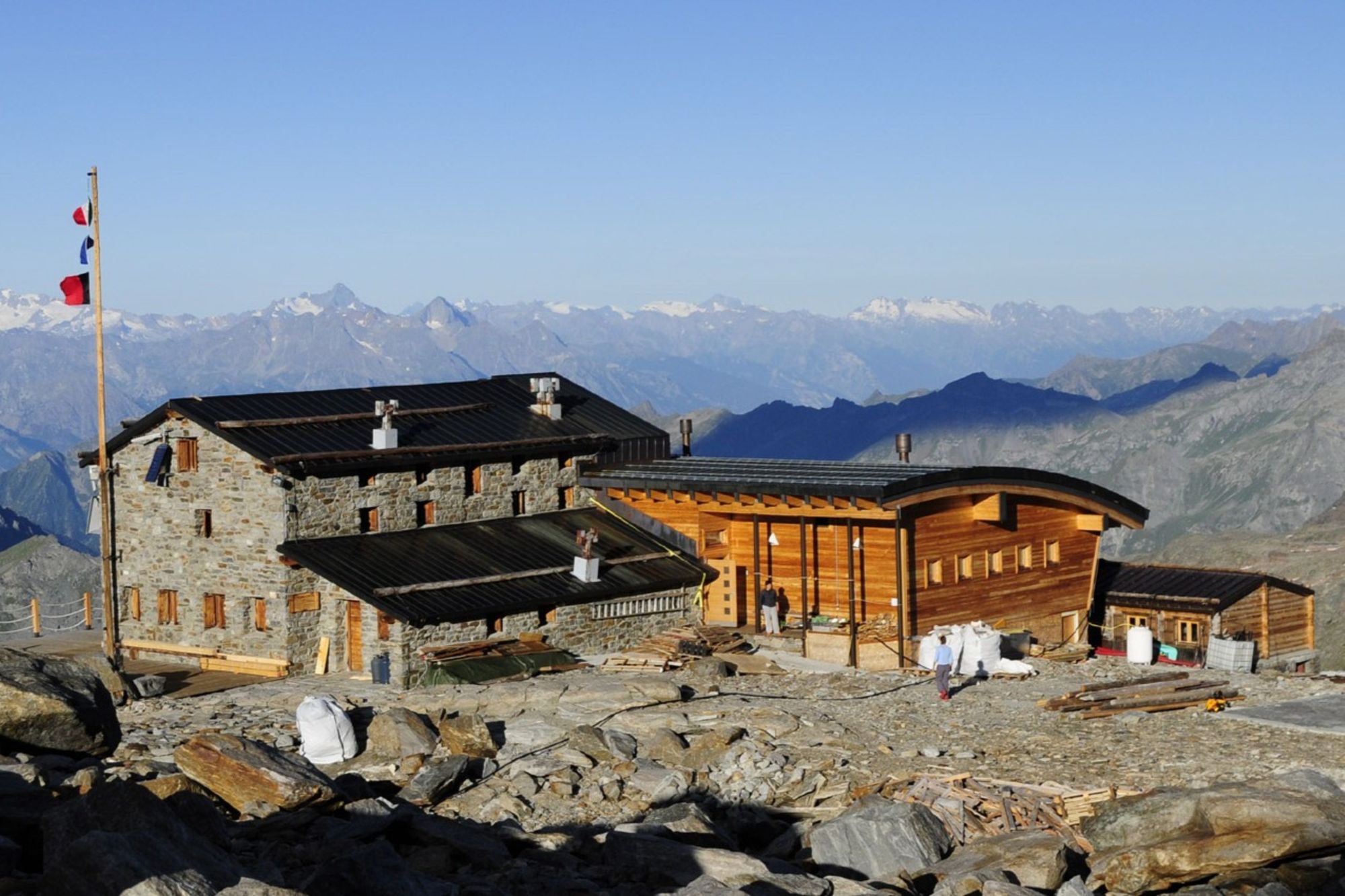
In short, the mountain huts on Monte Rosa are excellent. They're renowned for their comfort and quality, particularly in terms of gastronomy. The Margherita hut is probably the most famous hut on the massif, given that it is the highest building in Western Europe, sitting on the summit of Signalkuppe. You can see this hut, which was inaugurated in 1893, from the valley floor, and it has a selection of bunk beds as well as a beautiful wooden eating area - and one of the world's great views.
The Mantova mountain hut, pictured above, is the perfect point to start an ascent of Signalkuppe, or indeed the Vincent Pyramid. Opened in 1984, it's owned by the Alpine Guides of Gressonay and sits 3,498m above sea level on the Gastelet glacier. The toilets used to be outside, but you'll be glad to know they're now in the basement, and there are three on-site showers as well as bunks and a dining hall.
There are various other huts, but the spaceship-like Monte Rosa hut, discussed earlier in this piece, at 2,883m, has to be the most unique. Dressed up in a reflective outer, in the middle of the glaciers of Zermatt, it's a special place.
The huts of Monte Rosa are renowned for their excellent food - from fondue to fine wines, cakes, coffee, pasta and pizza to various veggie options - and many even accept card, though it's not a bad idea to bring cash too, given the altitude.
What to Pack for a Monte Rosa Climb
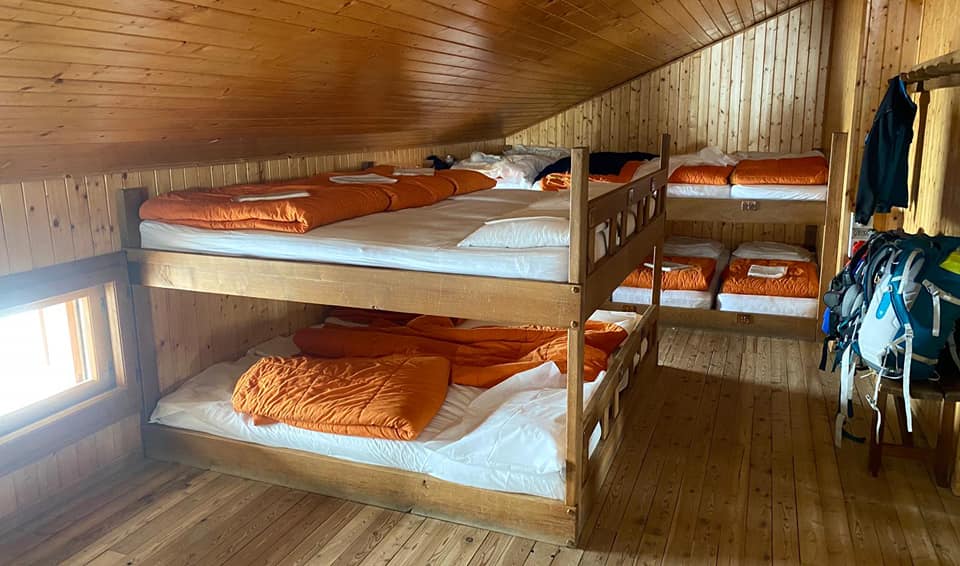
You’re going to need a lot of specialist equipment to climb Monte Rosa, whichever route you choose to take, from an ice axe and a helmet to a climbing harness, B2 or B3 boots (so they are crampon-compatible) and mountaineering gloves, a headtorch, a proper hooded hardshell and insulating layers.
Blankets and duvets are provided in the mountain huts, which means you don’t need a sleeping bag, but a sleeping bag silk liner is a good idea. For the full kit list, see the drop down bar in our ‘Climb Monte Rosa’ adventure.
Read more:
- A Guide to the Tour of Monte Rosa
- Mrs Henry Warwick Cole’s Tour of the Monte Rosa
- 5 Tips for Climbing Mont Blanc
Inspired? Check our adventure to climb the Monte Rosa, reaching the peak of Signalkuppe (Punta Gnifetti), and the Vincent Pyramid!

